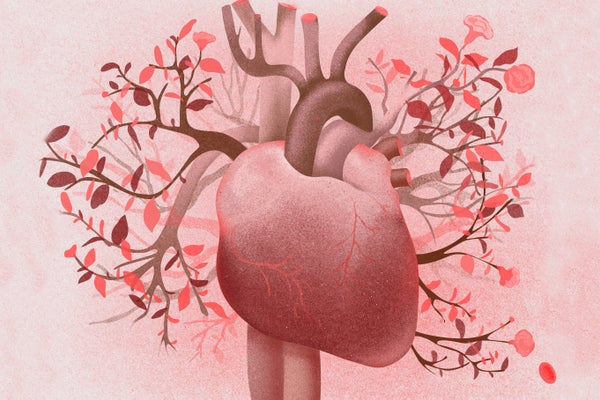December 16, 2024
Thank you for reading this post, don't forget to subscribe!1 min read
Science in meter and verse
By John Liles edited by Clara Moskowitz

Masha Foya
Edited by Dava Sobel
The heart will have no interruption,
begins as a simple tube (blood flow undivided)
at the middle of embryo
hurried—task of branching sufficient blood
levels into all upcoming situations. (in-roads throughout the growing body)
The heart, quick, outgrows its own
allotted cavity, and bends a branch right (every time)
and back—pivots into
the cardiac loop, plotting
pistons, to hang self-knotting,
strung-up. The blood muscle must
raise divisions. The hollow heart
On supporting science journalism
If you’re enjoying this article, consider supporting our award-winning journalism by subscribing. By purchasing a subscription you are helping to ensure the future of impactful stories about the discoveries and ideas shaping our world today.
now split, turns intrinsic—walling out
a partition, a pocket, a sinus to house
the pulmonary hinges—a body’s
bloodlines soon become confluent (before bringing back a breath)
to enter the heart.
When later more transitional twisting
has caused a furrow, external,
the interfacing ventricle wall will
thicken—meshwork of muscular
fetters tuck together, reach out,
near-bridge for the atrial pacemaker.
An intra-arterial hollow so self-established. (lock and chamber)
Meanwhile, against the narrower walls
and paired opposite, loose masses
of migratory tissue (from the mesoderm)
driven. Could linger on,
the non-particular life of a stem cell.
But here soft commotion reaching out,
endocardial cushions obstruct
the blood rush into opposite corners.
Predestined axes of embryo, peristalsis
in a pre-valved hollow—the body’s
first organ to engine
an animal’s ontogeny,
the heart
as it begins to beat.

